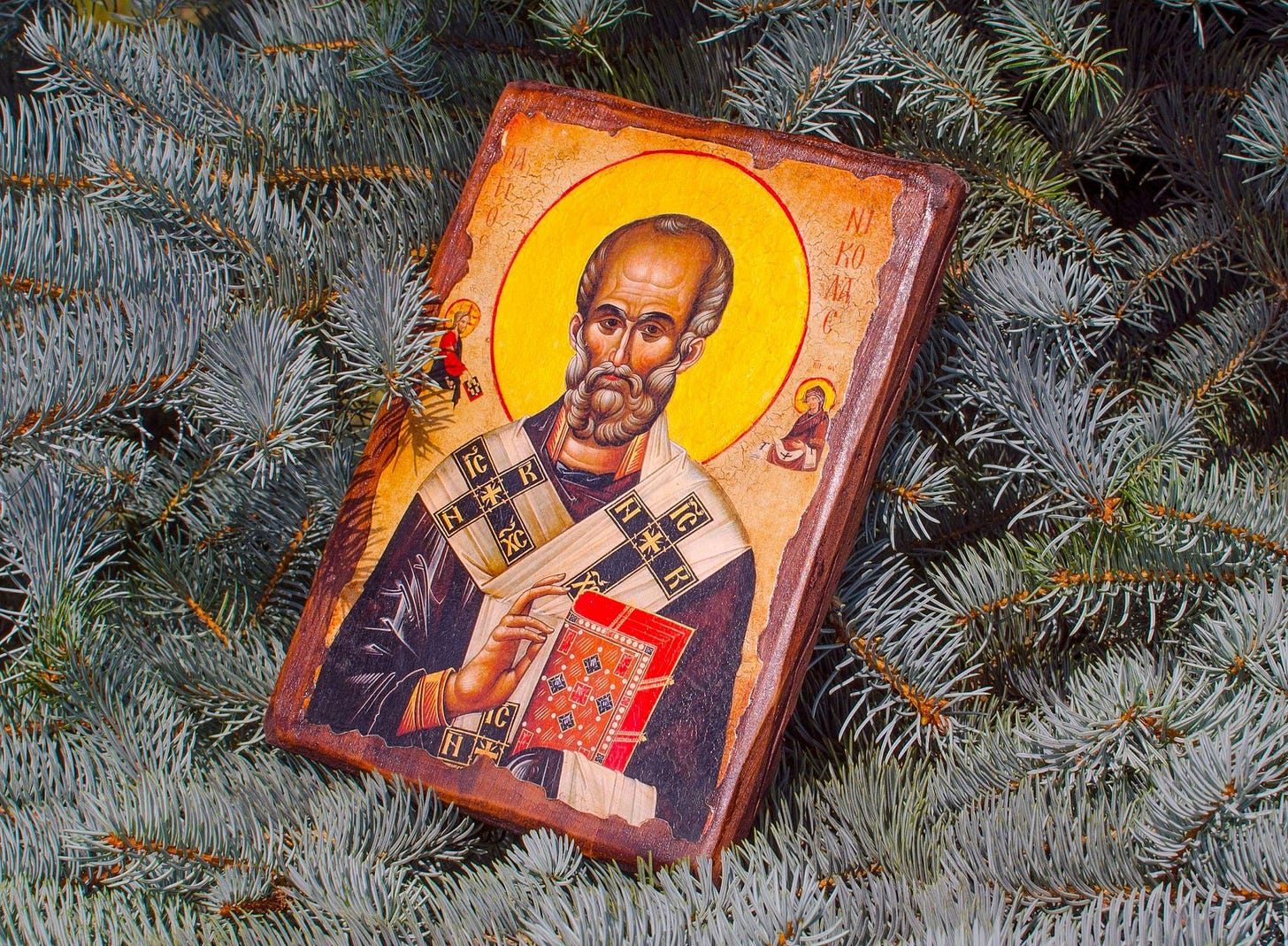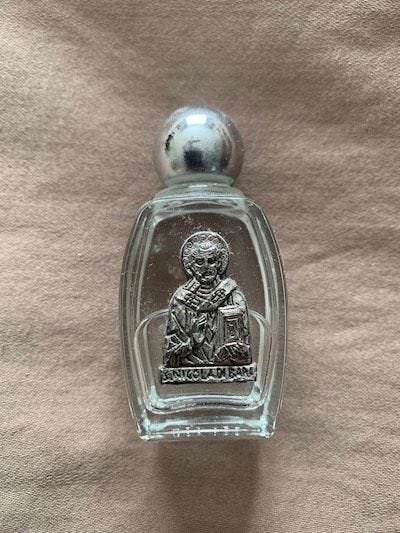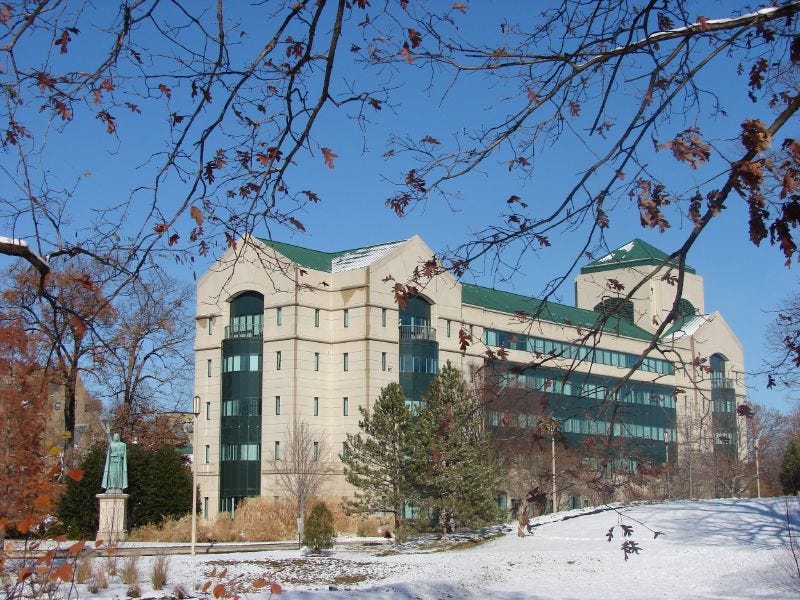Among the legends surrounding St. Nicholas, one that has become increasingly popular in online meme culture in recent years is the tale of the saint striking the heretic Arius during the Council of Nicea.
As the story goes, the council fathers were debating the nature of Christ. Arius argued that Christ was fully human, but not God. At one point, jolly ol’ St. Nicholas got so angry at Arius’ obstinacy that he socked him right in the face.
Turns out, it’s probably not a true story, as there was no record of it happening for more than 1,000 years after the saint’s death. But people still love it. (And if you’re interested in a whole history of Catholic slaps and punches, The Pillar has you covered.)
But there’s more to the Saint-Who-Became-Santa than the punch that probably wasn’t. Here are some more things to know about St. Nicholas:
He was made a bishop at a young age
We don’t know much about St. Nicholas’ youth, as there are no historical documents connected to it. But tradition holds that he was still a young man when he was appointed bishop of Myra, in present-day Turkey, in the 4th century.
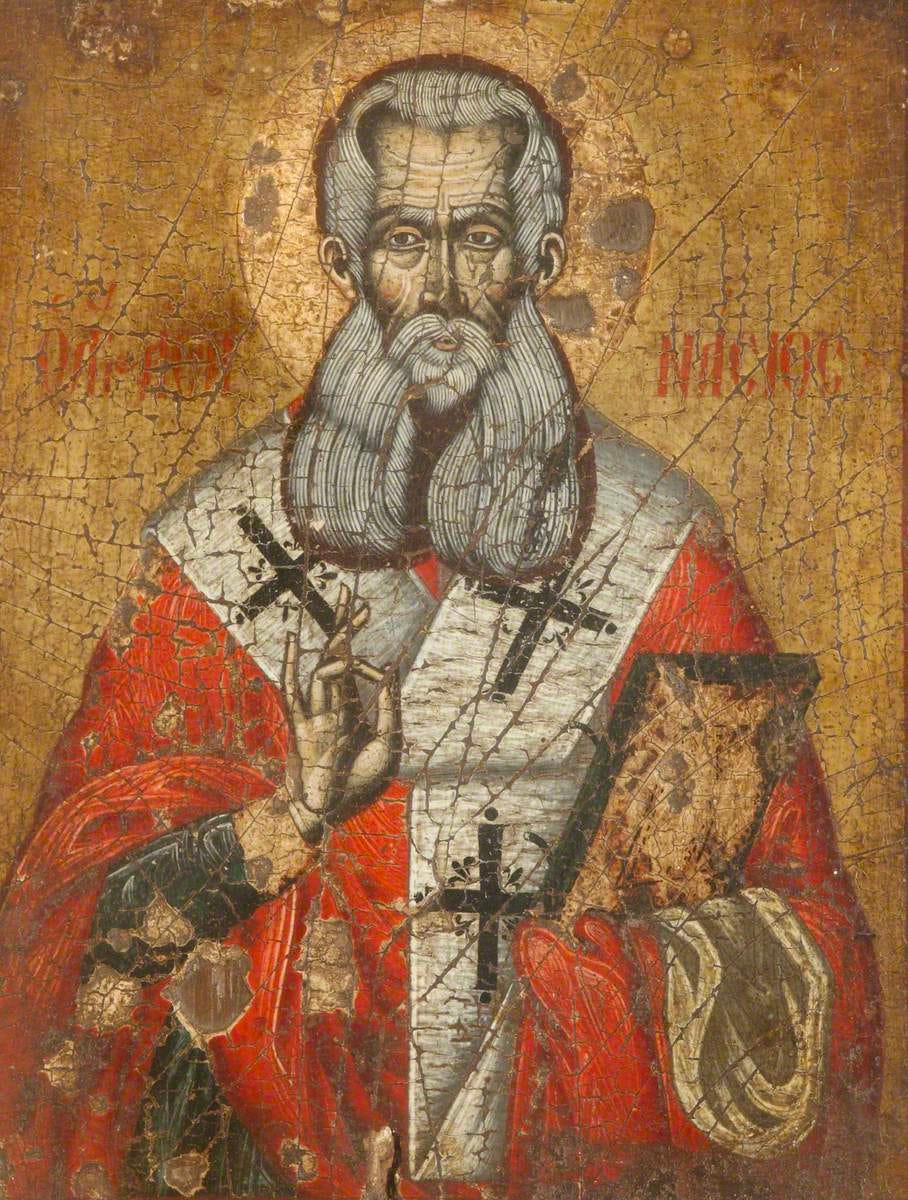
The bishop was known for his generosity, which is exhibited in the popular story of his secretly paying the dowries of three girls facing a future of prostitution because they were too poor to wed.
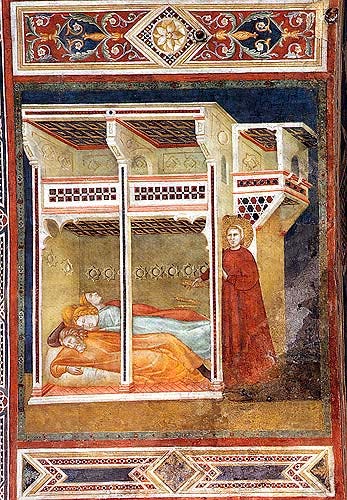
He was imprisoned and probably tortured for his faith
As bishop, Nicholas was imprisoned during the brutal Persecution of Diocletian. And several accounts of his life hold that he was tortured during his imprisonment, but never renounced his faith.
The saint was released under Constantine the Great.
He was buried in Turkey, but now he’s in Italy
Following his death around the year 343, St. Nicholas was buried in the cathedral in Myra. In 520, a new church bearing the name of St. Nicholas was built atop the old one.
In 1087, his remains were seized by Italian sailors, who took them to Bari, Italy, where they remain today in the Basilica of St. Nicholas.
From the time it was buried in Myra, St, Nicholas’ body was said to exude a sweet-smelling liquid, to which numerous miraculous healings were attributed.
The saint’s remains in Bari continue to exude a liquid, although some scientists believe it is merely condensation.
Pilgrims visiting the saint’s remains in Bari have long been able to take home a small vial of the liquid in a container bearing an image of St. Nicholas.
A pre-filled vial, complete with St. Nick on the front, comes for a suggested donation of 1 euro. Or at least it did a few years ago – no word on whether inflation has changed things in Bari.
He was a skinny saint
Contrary to the depictions of Santa Claus as a rotund old elf, a scientific examination of the saint's bones actually found that St. Nicholas was of slender-to-average build.
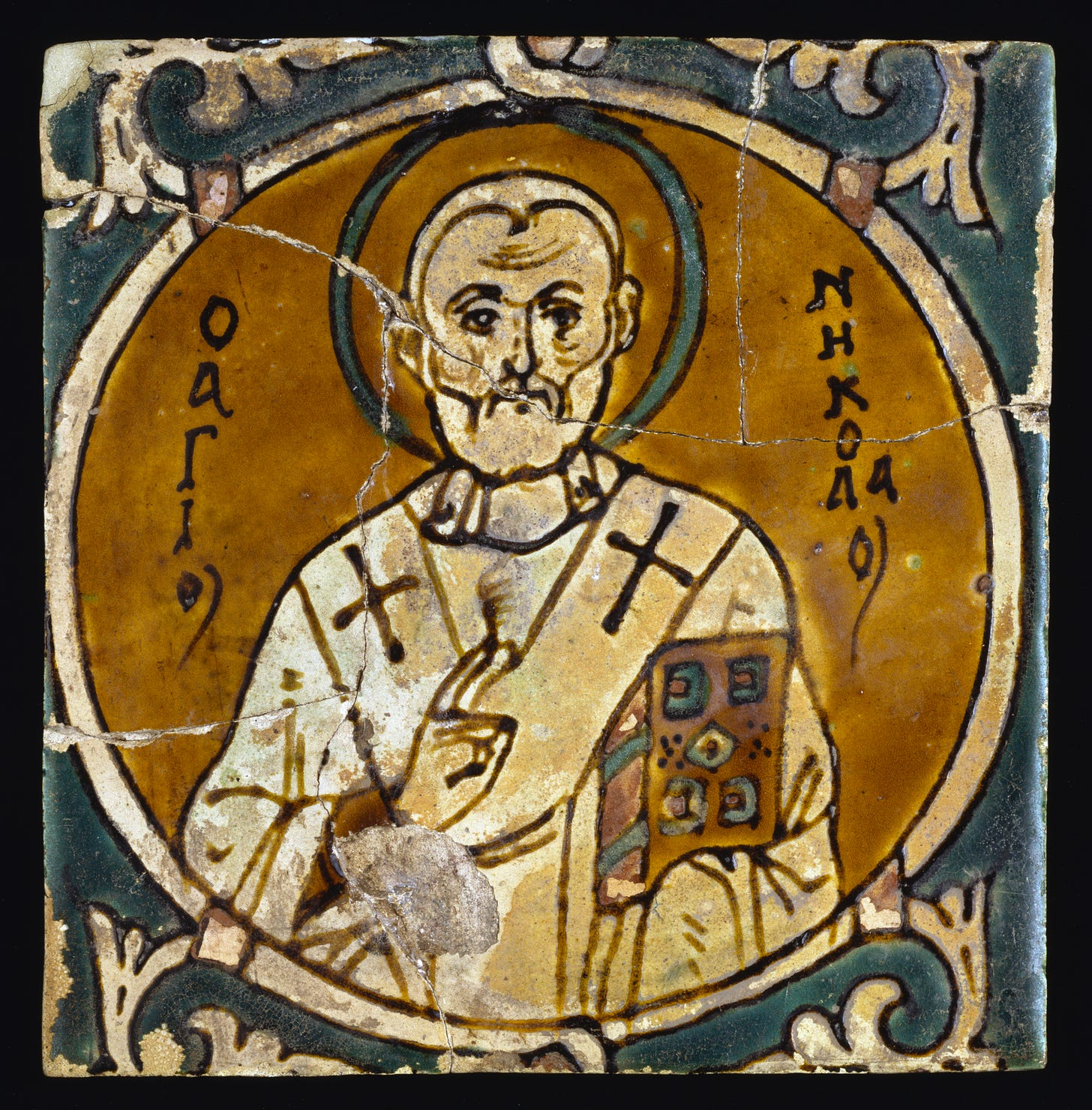
By analyzing the saint’s bones, scientists also determined that he was 5-foot-4 (average height at that time), was over 70 years old at the time of his death, and had a broken nose (Maybe Arius punched him back?)
Scientists even reconstructed what his face might have looked like, based on his bone structure!
He’s the patron saint of wolves, falsely accused prisoners, and Russia
St. Nicholas is venerated by both the Eastern and Western Churches, and over the centuries has become a patron for numerous causes. He is invoked as a special intercessor for sailors, children, merchants, falsely accused prisoners, wolves, brewers, repentant thieves, Greece, and Russia, to name a few.
Editor’s note: This St. Nicholas round-up was initially published in 2022.

